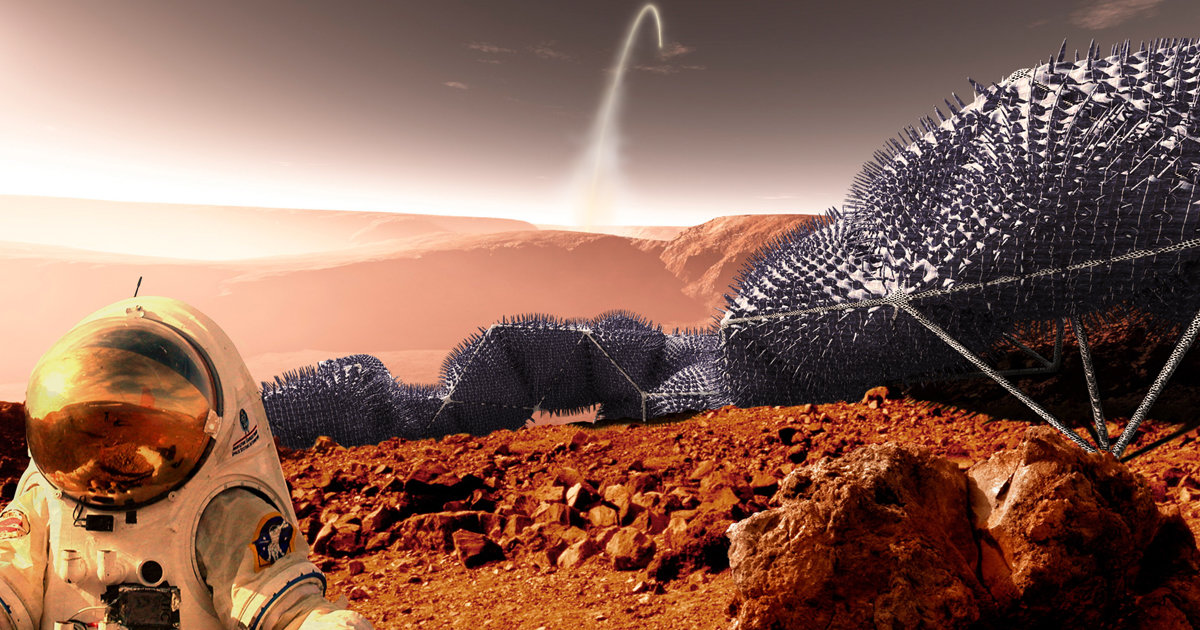
S.I.L.I.C.A.T.E. project addresses rising issue of extraterrestrial habitation.
Concept of replicating cell-like artificial ecosystem flourishing in harsh environment of space or extraterrestrial bodies is inspired by reproduction cycle of a living terrestrial cell.
Tetrahedron shaped modular structure is the most simple analogy for replicating conditions and capabilities of cellular reproduction. This is different approach to architectural design:
• no need for designing a building or habitat that has basically determined shape up front
• designing the most simple part (in this case a tetrahedron cell) and let the conditions of environment and the human judgment to guide it through the mechanism of replication
•ending with a result that would be almost impossible to imagine in the beginning
S.I.L.I.C.A.T.E. is capable of adapting to any solid surface planet topography, making it ideal for mankind quest to colonize rest of the Solar System (as well as certain areas of our own planet):
• MOON - closest celestial body
• MARS - resemblance to Earth
• ASTEROIDS - mineral resources
• GAS GIANTS moons (water - possibility of life)
Theme "Extra terrestrial habitation" is on the border (if not out) of the standard architectural scope. Student had to cope with the criteria such as: the impact of micro-meteoroids, cosmic radiation, extreme temperature fluctuations, lower gravity environment. This required a study of unusual documents and inputs.
According to available information, all necessary input data were managed correctly and combined in creative way.
The architectural design is inspired by cell division and organism growth processes. The idea is implemented in load bearing structural system, that may be supplemented without any significant influence to the overall structure. The skeleton consists of spatial, lattice structure of regular six-axis growth. The smallest unit to be defined is a tetrahedron cell. The selected structural design has the potential to resist the constant force effects (gravitational field) in every dimension, variable force effects (atmospheric manifestations - wind, changes of momentum in case of structural vibrations), resists any pressure (compression, expansion) and is able to withstand partial damage. Skeleton resistance is determined by the materials and implemented building techniques. Project S.I.L.I.C.A.T.E. takes advantage of advanced 3D printing methods from locally available raw materials (method considered by NASA to be the best option for sustainable space colonies). Structural frame is supplemented by pneumatically tensioned layered textile which defines and protects the inner living environment. Project considers the use of robotics and autonomous processes throughout the lifecycle of the chosen structure.
I consider S.I.L.I.C.A.T.E. project to be creative, functional and aesthetical.